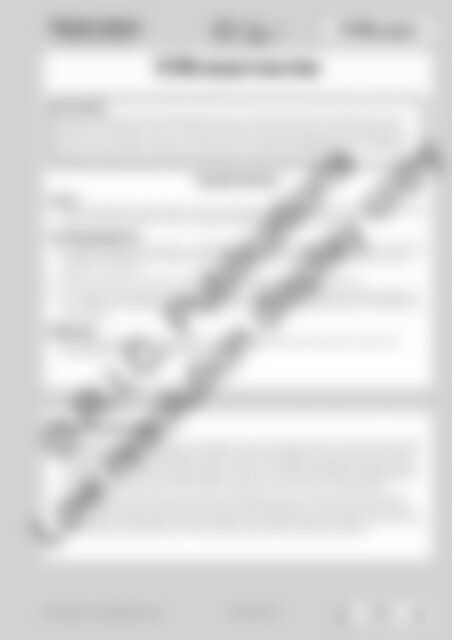6172RB Science a STEM approach Year 2 low res watermark
Create successful ePaper yourself
Turn your PDF publications into a flip-book with our unique Google optimized e-Paper software.
Physical sciences<br />
FORCED TO MOVE<br />
<strong>STEM</strong> project<br />
<strong>STEM</strong> project overview<br />
Air vs gravity<br />
Students design and create a floating ball toy for each partner that uses a push force to make<br />
a table tennis ball float in the air. The toy must have a small container to catch the ball when<br />
gravity pulls it towards the ground. Students take two digital photographs of their floating ball<br />
toy, one while the ball is at <strong>res</strong>t and one while it is in action, and upload these to a computer,<br />
labelling the type of force at work and the direction of the force in each image.<br />
Concepts overview:<br />
<strong>Science</strong><br />
• Apply knowledge of how different forces make objects move in different directions and how the<br />
amount of force needed to move an object depends on the object’s mass.<br />
Technology/Engineering<br />
• Apply the design process to plan, create and evaluate a floating ball toy which uses a push force<br />
to make the ball float, and al<strong>low</strong>s gravity to pull it down towards the ground so that it can be<br />
caught in a container.<br />
• Select appropriate materials and apply safety procedu<strong>res</strong> while creating the toy.<br />
• Take digital photographs of the floating ball toy at <strong>res</strong>t and in action. Upload the photographs<br />
to a computer and add labels to show the type of force at work and the direction of the force on<br />
each image.<br />
Mathematics<br />
• Use indirect measurement to measure the mass of the table tennis ball and to ensure the<br />
floating ball toy is shorter than a ruler.<br />
Alternative project ideas:<br />
• In small groups, students design and create a winch or a pulley system that can be used to lift a<br />
drink bottle. It must use a pull force to lift the drink bottle and gravity to <strong>low</strong>er the drink bottle.<br />
Students must lift the drink bottle as high as a 30-cm ruler. When completed, students record<br />
a video showing how their simple machine used forces to lift the drink bottle and the direction<br />
the drink bottle moved when lifted. See the example at .<br />
• In pairs, design and create a set of sinking and floating toys for young children to play with.<br />
The set must include at least two sinking toys and two floating toys. The sinking toys must be<br />
heavier than the floating toys. Students create a video explaining why teachers should buy their<br />
set of floating and sinking toys to help students learn about pushing and pulling.<br />
© R.I.C. Publications<br />
Low <strong>res</strong>olution display copy<br />
R.I.C. Publications® – www.ricpublications.com.au 978-1-925431-95-7 YEAR<br />
<strong>Science</strong>:<br />
A <strong>STEM</strong> APPROACH<br />
139<br />
2


















